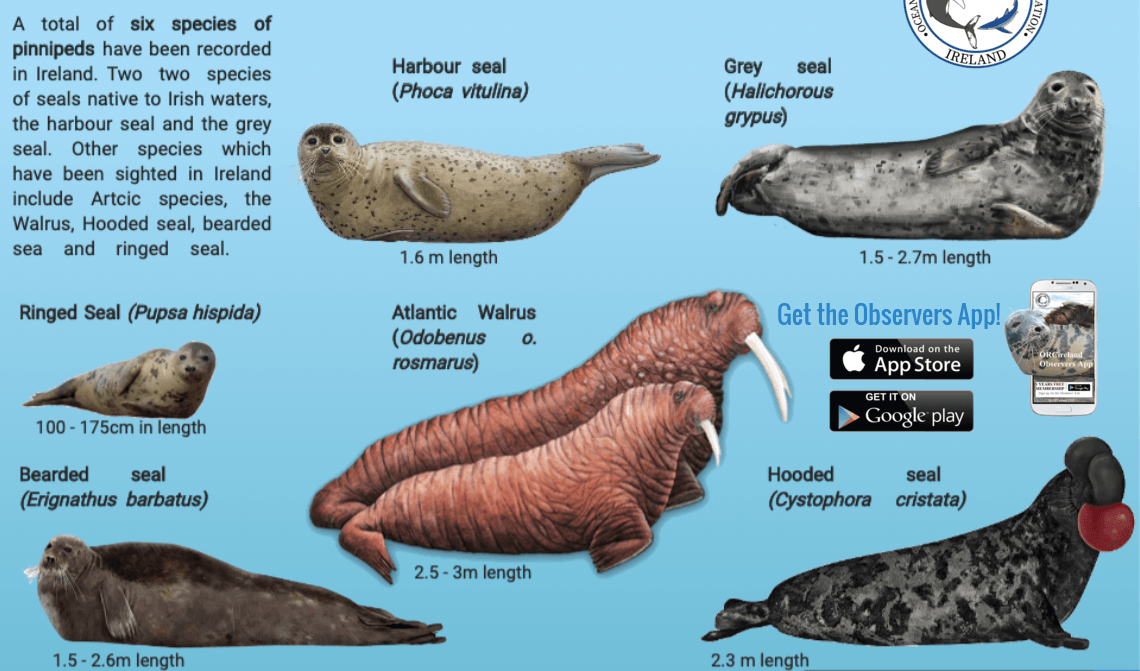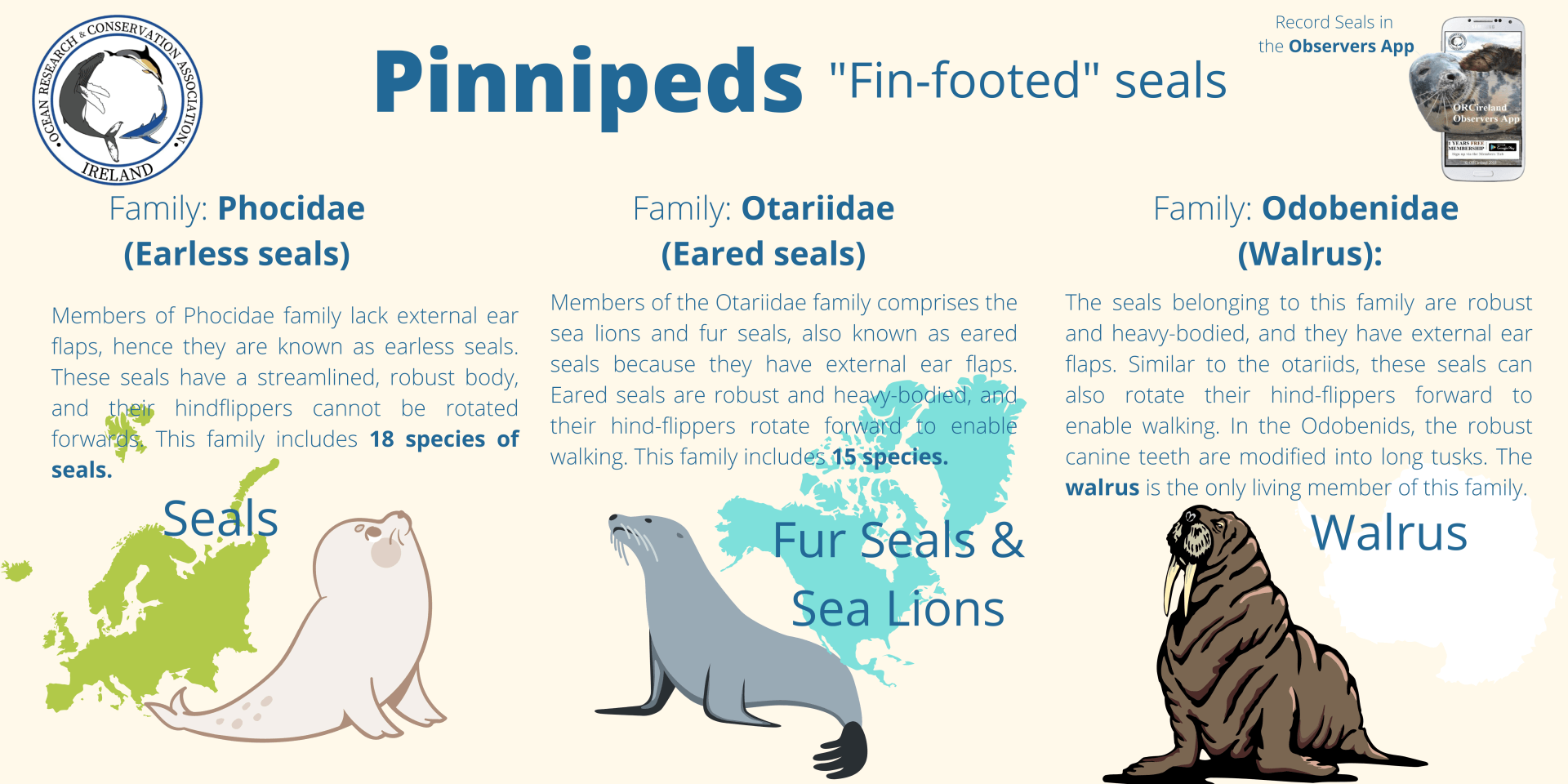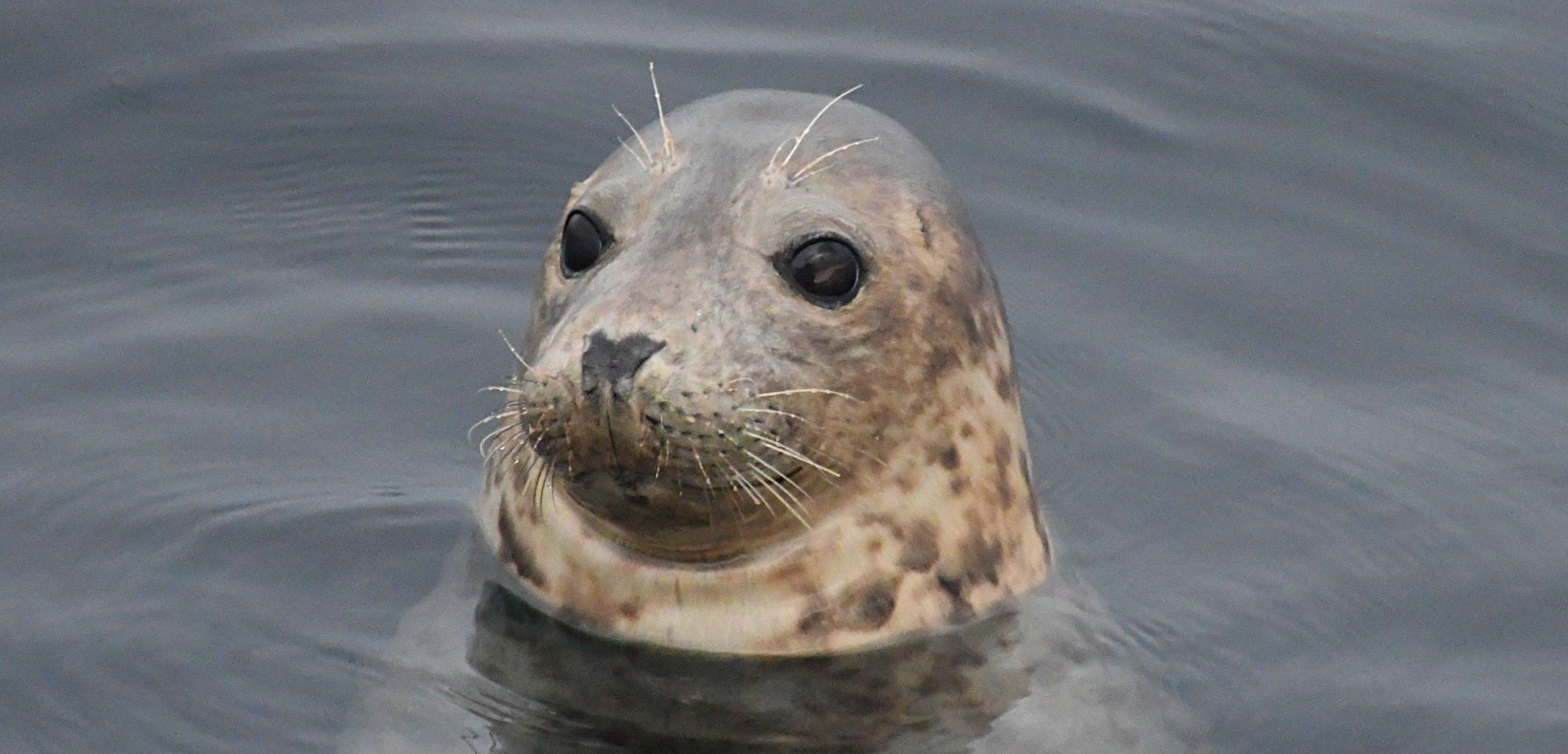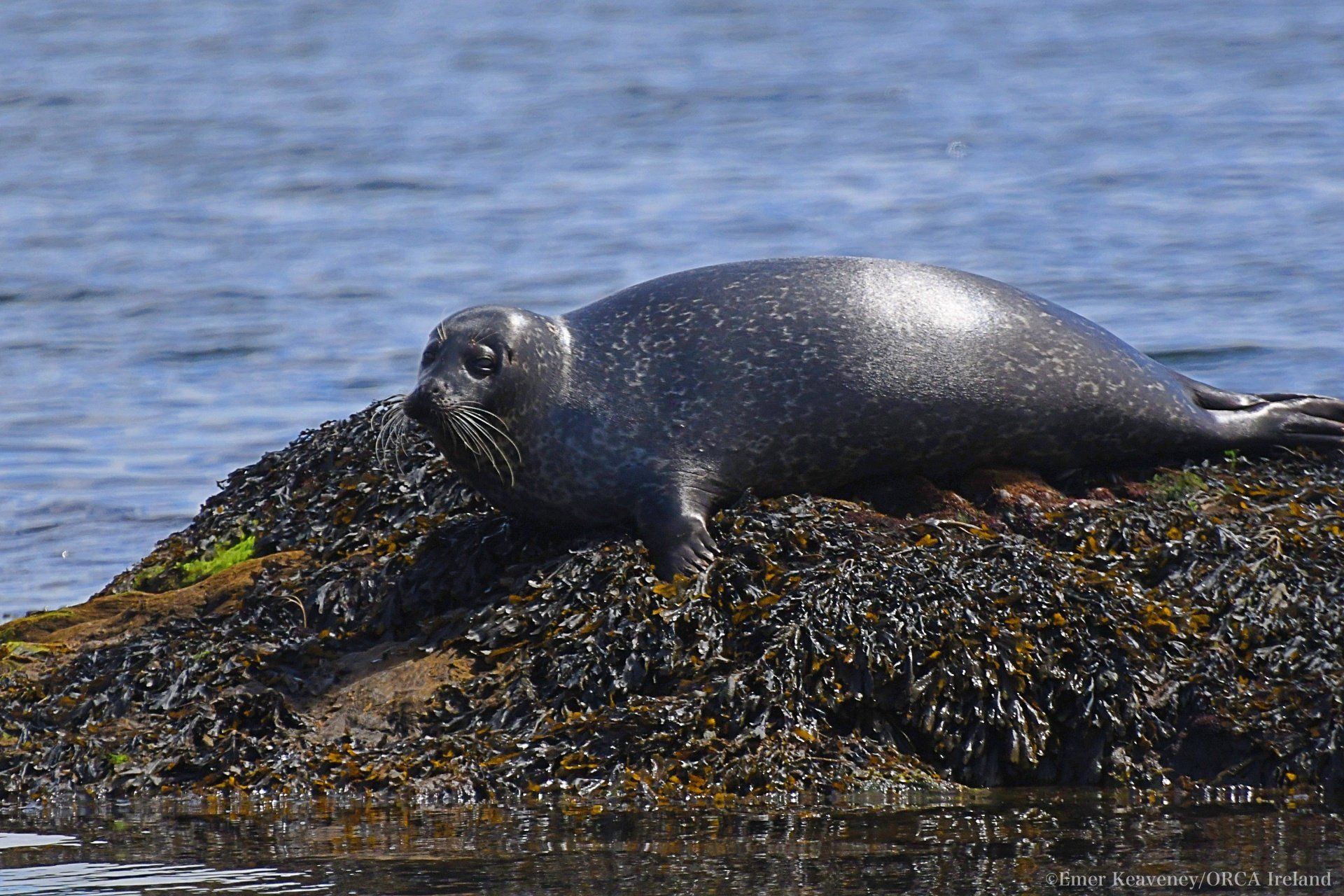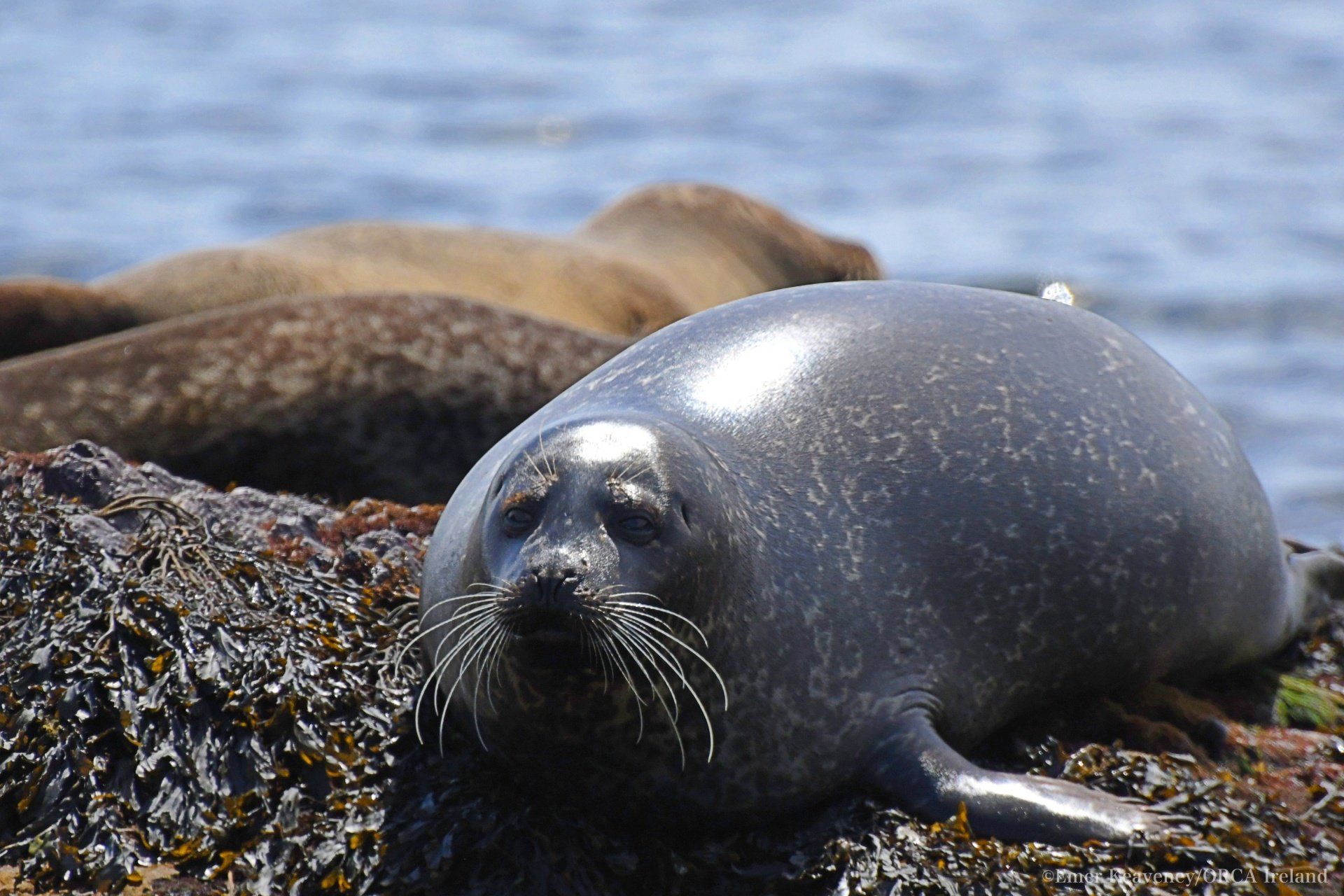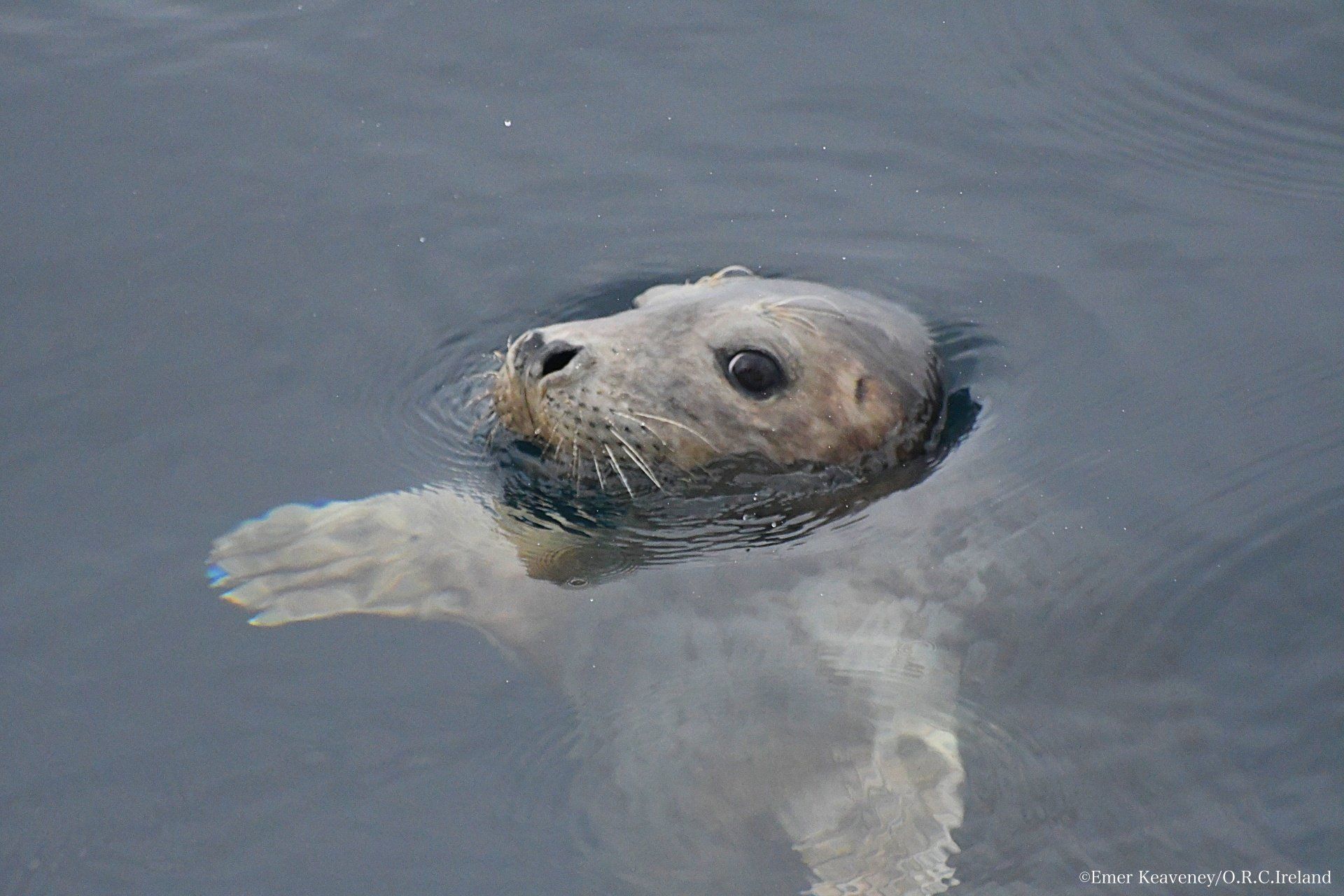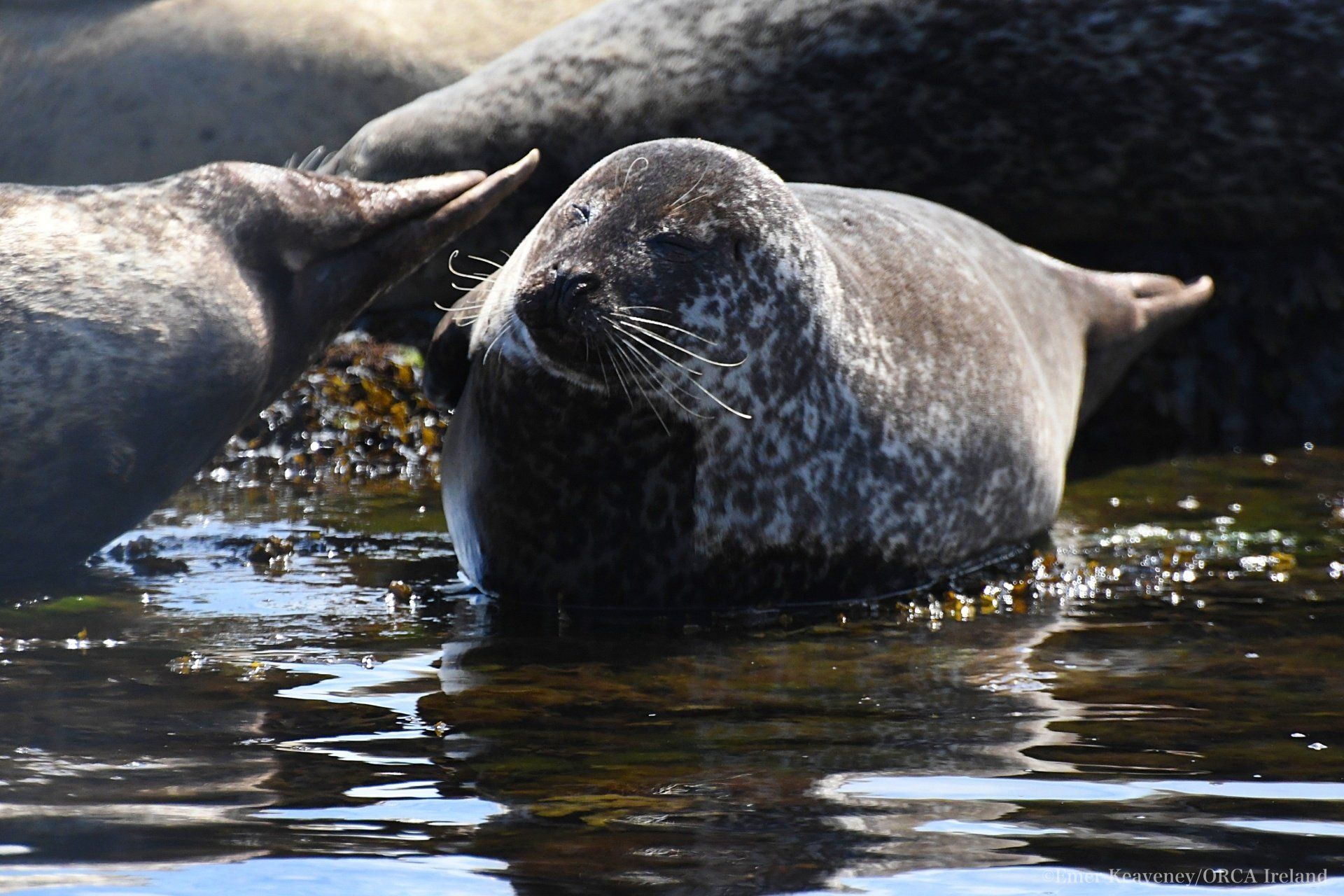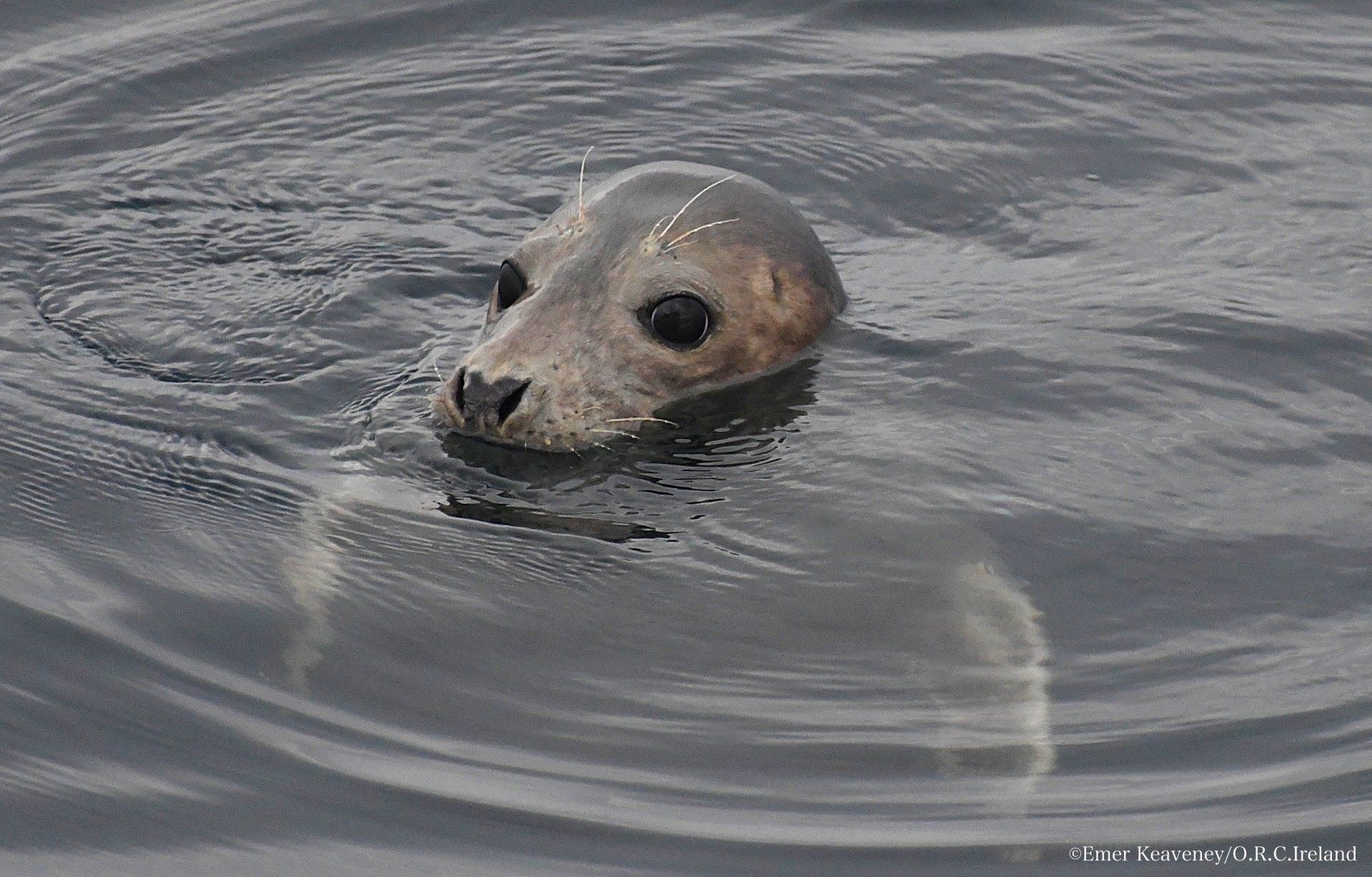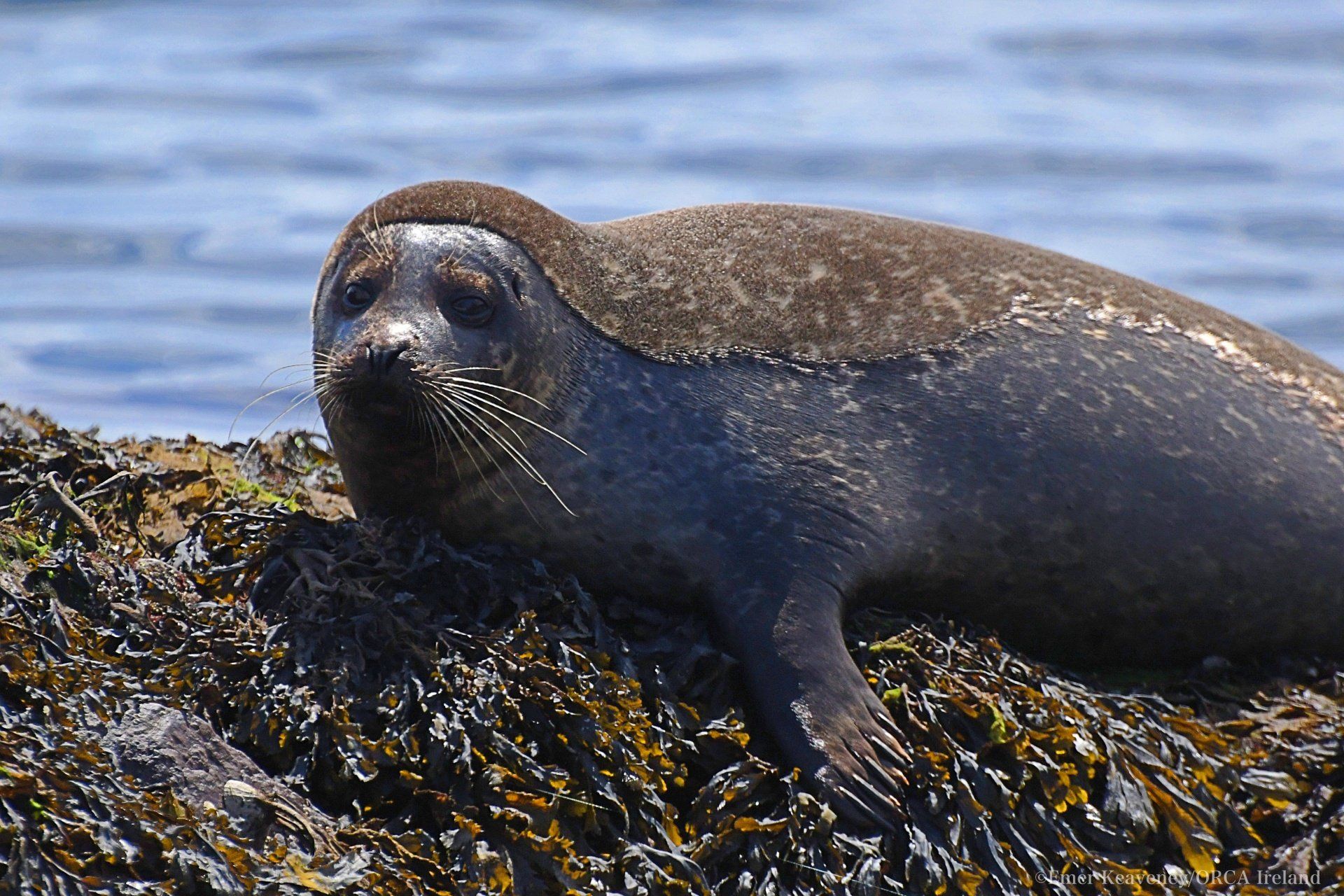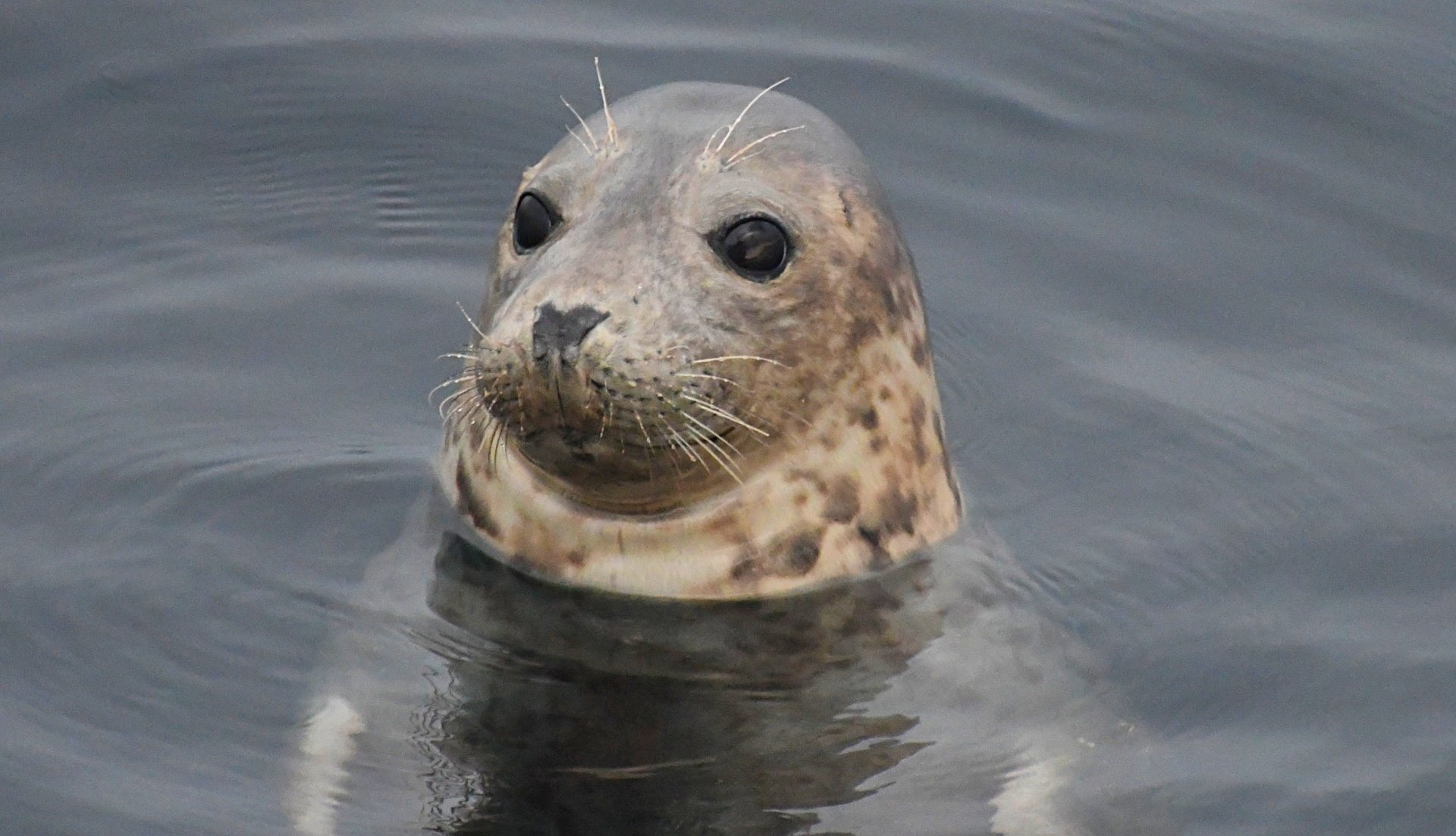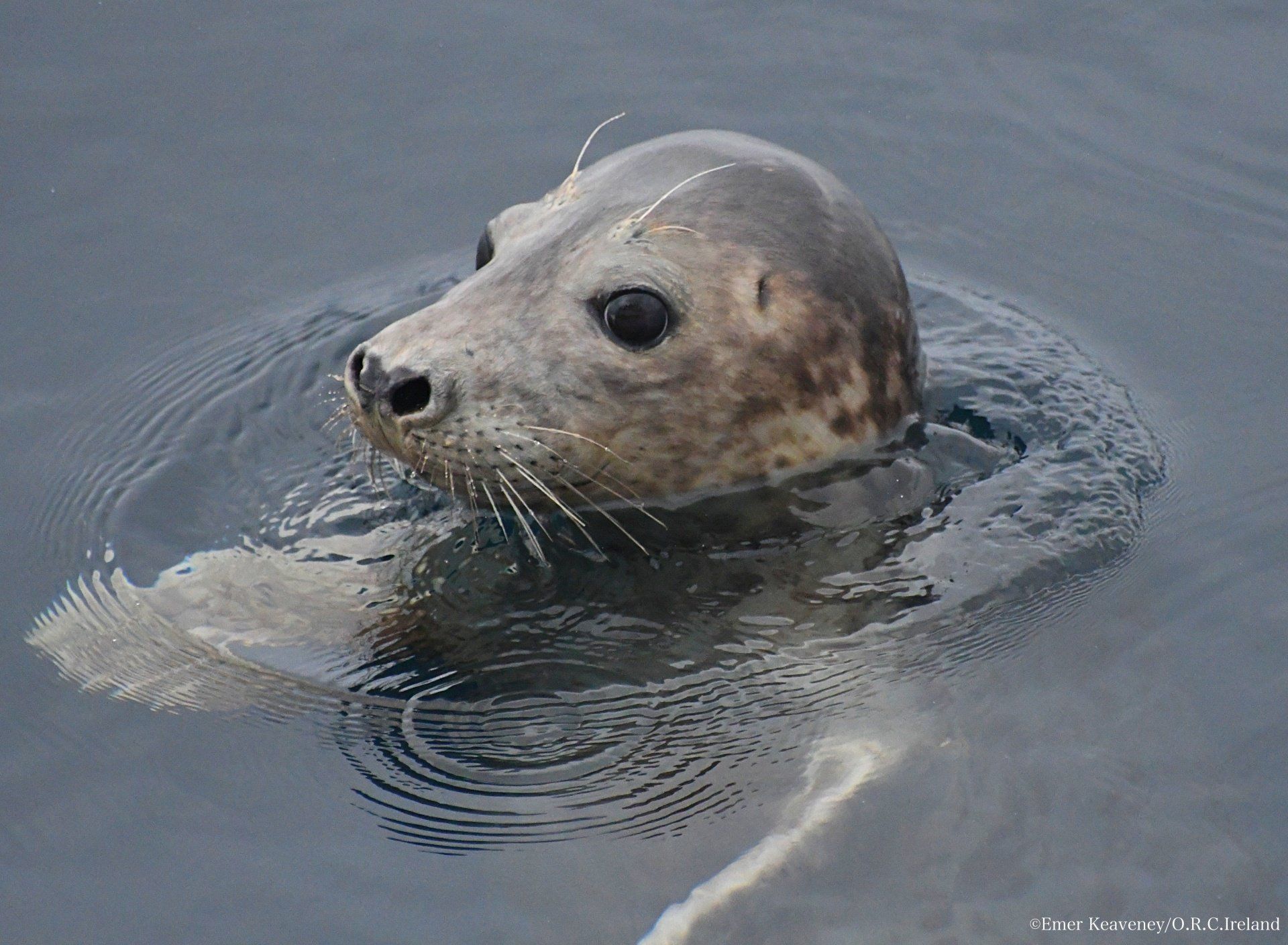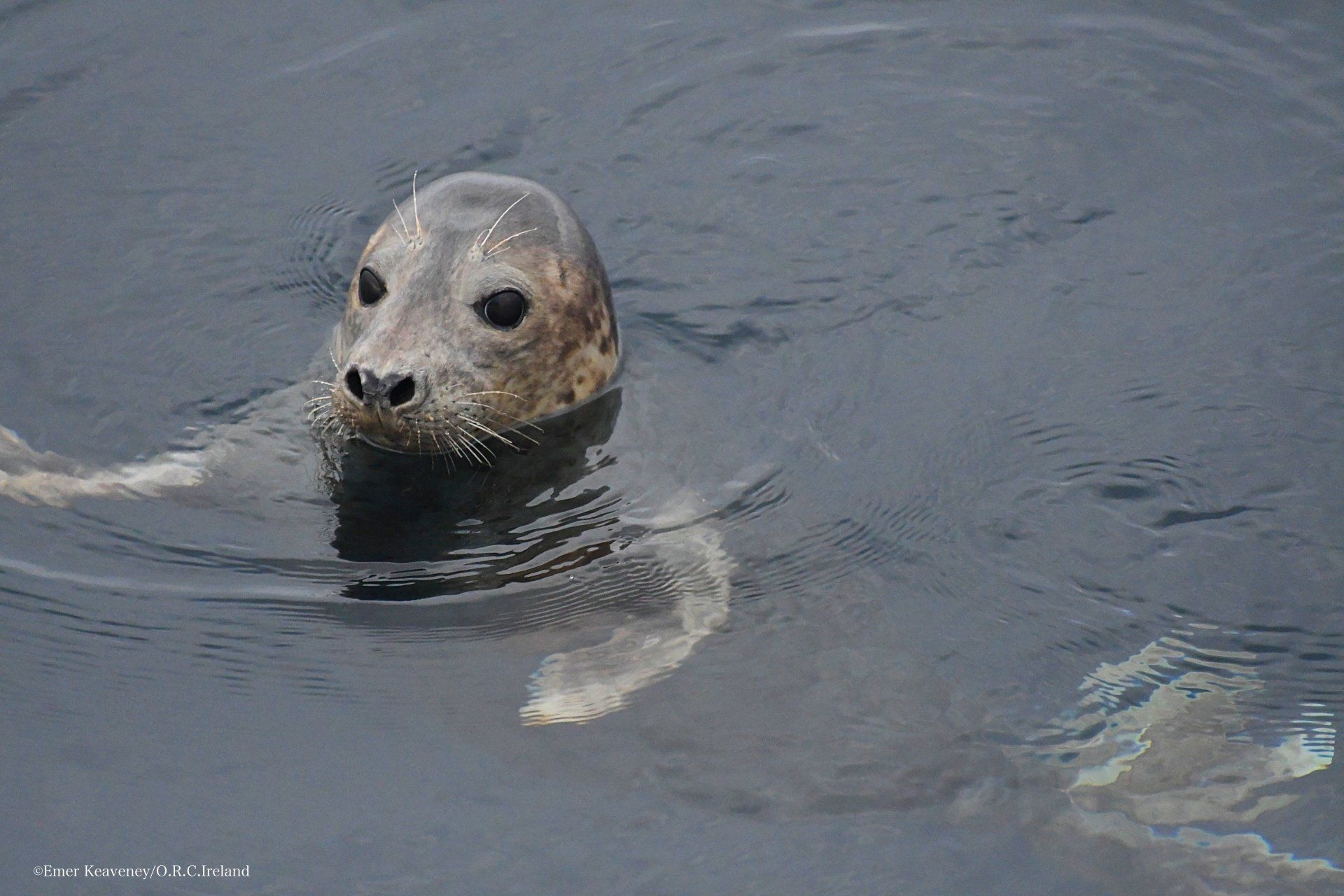Pinnipeds
Seals, Sealions & Walrus.
Two species of seals are resident in Irish waters – the harbour seal and the grey seal. Both of these seals belong to the family Phocidae. Seals have established themselves at several haul-out sites (or terrestrial colonies) along all coastlines of Ireland. Harbour seal and grey seal are strictly protected in in the Republic of Ireland under the Wildlife Acts, 1976 and 2000. They are also listed under Annex II of the EU Habitats Directive as species of Community Interest.
SEAL ID PORTAL
How to differentiate between grey and harbour seals?
- Head : When in water, only the head of the harbour seal is visible above the water, while the grey seal adopts a vertical “bottling posture” with head and the upper body out of the water. In the side profile, grey seals have much flatter noses than the harbour seals. In grey seals, the eyes are much more close to the ears than the nostrils, while the eyes are almost equidistant from the ears and nostrils in harbour seals.
- Nostrils: Harbour seals have V-shaped nostrils – they are converging and set close together, whereas in grey seals, the nostrils are set wide apart are almost parallel to one another.
- Pupping : Female grey seals remain on land while nursing their newborn pups. Grey seal pups are born with a white or yellowish-white lanugo. Harbour seal pups are born with adult-like pelage, the lanugo is shed while they are still in the womb. Harbour seal pups are highly precocious, and will start swimming with their mothers within hours of their birth.
- Haul-out behaviour : Harbour seals are not very vocal, but grey seals may make noises resembling howls when hauled out. While moving on land, harbour seals wriggle like caterpillars, while grey seals bounce along. Harbour seals have a characteristic “banana-like” resting posture – they have their head and tail raised above the ground.
List of Services
-
Grey seals ( Halichoerus grypus )
Grey seals have a medium-sized, robust, broad and elongated body that tapers backwards and relatively short, broad, forward-set fore flippers. The males measure 1.95-2.3 m in length, while females measure about 1.65 – 2 m. Newborn pups are 0.9-1 m in length and weigh about 11-20 kg. Male grey seals can be half as big again as the females, and the chests, necks and shoulders of adult males are more massive than the females, with heavily folded and wrinkled skin. The nose in adult males is longer and broader than that of adult females, giving it an equine or horse-like appearance. The colour of the pelage varies from black to brown to dark grey and even pale white, with darker blotches scattered on the back and sides, and sometimes on the belly. Adult females generally have a lighter pelage than adult males, and pups are born with a silky white lanugo (fine, soft hair) that is moulted into a lighter phase of the adult pelage at about 2-3 weeks of age. Grey seals have broad, open nostrils that are widely separated and parallel. Their eyes are set further back from the nostrils and closer to the ears.
Grey seals ( Halichoerus grypus )
-
Harbour seals ( Phoca vitulina )
Harbour seals are small to moderate-sized, with a plump body, short neck, rounded head and a slightly upturned nose. The males range in length from 1.4 to 1.9 m, while females range from 1.2 to 1.7 m. Newborn pups are usually 0.75-1 m in length and weigh about 8-12 kg. The body hair, or pelage, ranges from silver background with scattered black spots and blotches to black background with scattered lighter rings. Pups are born with spotted adult-type hair. Harbour seals assume a characteristic “banana-like” posture while resting – with head and tail raised above. They have small fore flippers with long, hooked claws and proportionately small, square ended hind flippers. Their nostrils from a V (or converge) when seen head-on, and eyes are equidistant from the nostrils and ears.
Harbour seals ( Phoca vitulina )
-
Bearded seal ( Erignathus barbatus )
The bearded seal gets its name from its thick, light-colored whiskers, which resemble a beard. These ice seals live in Arctic waters, often on or near floating ice. Bearded seals are 7-8 feet long and weigh 575-800 pounds. Females are larger than males. Bearded seals have a small head, short snout, and square flippers. Their large body has a dark gray or brown coat that may have dark spots or rings.
These seals live on or under the ice. They may even sleep in the water, with their heads at the surface so that they can breathe. When under the ice, they breathe through breathing holes, which they may form by pushing their heads through thin ice. Unlike ringed seals, bearded seals don't seem to maintain their breathing holes for long periods. When bearded seals rest on the ice, they lay near the edge, facing down so that they can quickly escape a predator.
Bearded seal ( Erignathus barbatus )
-
Ringed seal ( Pusa hispida )
The ringed seal is an earless seal inhabiting the Arctic and sub-Arctic regions. The ringed seal is a relatively small seal, rarely greater than 1.5 m in length, with a distinctive patterning of dark spots surrounded by light grey rings, hence its common name. It is the most abundant and wide-ranging ice seal in the Northern Hemisphere, ranging throughout the Arctic Ocean, into the Bering Sea and Okhotsk Sea as far south as the northern coast of Japan in the Pacific and throughout the North Atlantic coasts of Greenland and Scandinavia as far south as Newfoundland, and including two freshwater subspecies in northern Europe. Ringed seals are one of the primary prey of polar bears and killer whales, and have long been a component of the diet of indigenous people of the Arctic.
Ringed seal ( Pusa hispida )
-
Hooded seal (Cystophora cristata)
The hooded seal is a large phocid found only in the central and western North Atlantic, ranging from Svalbard in the east to the Gulf of St. Lawrence in the west. The seals are typically silver-grey or white in color, with black spots that vary in size covering most of the body. The generic name Cystophora means "bladder-bearer" in Greek, from the species' unusual sexual ornament – a peculiar inflatable bladder septum on the head of the adult male. This bladder hangs between the eyes and down over the upper lip in a deflated state. In addition, the hooded seal can inflate a large balloon-like sac from one of its nostrils. This is done by shutting one nostril valve and inflating a membrane, which then protrudes from the other nostril. Adult males are 2.6 meters (8 ft 6 in) long on average, can grow to 3.5 m, and weigh 300–410 kg (660–900 lb). Sexual dimorphism is obvious from birth and females are much smaller: 2.03 meters (6 ft 8 in) long and weighing 145–300 kg. Hooded seals live primarily on drifting pack ice and in deep water in the Arctic Ocean and North Atlantic. Although some drift away to warmer regions during the year, their best survival rate is in colder climates.
Hooded seal (Cystophora cristata)
-
N. Atlantic Walrus (Odobenus r. rosmarus)
The walrus is a large flippered marine mammal with a discontinuous distribution about the North Pole in the Arctic Ocean and subarctic seas of the Northern Hemisphere. The walrus is the only living species in the family Odobenidae and genus Odobenus. This species is subdivided into two subspecies:[2] the Atlantic walrus (O. r. rosmarus), which lives in the Atlantic Ocean, and the Pacific walrus (O. r. divergens), which lives in the Pacific Ocean.
Adult walrus are characterised by prominent tusks and whiskers, and their considerable bulk: adult males in the Pacific can weigh more than 2,000 kilograms (4,400 pounds)[3] and, among pinnipeds, are exceeded in size only by the two species of elephant seals.
N. Atlantic Walrus (Odobenus r. rosmarus)

